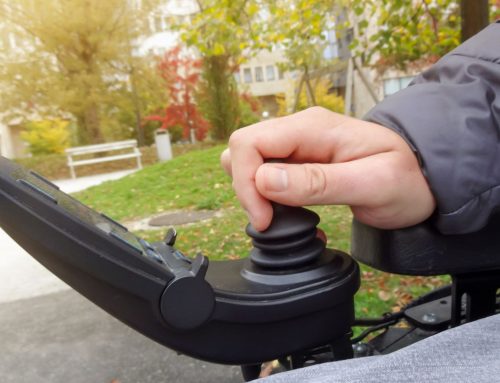Handwriting occupational therapy is aimed at helping school-aged children learn skills like hand-eye coordination, body posture, hand grip and letter formation that will help them succeed in many areas of life.
Even with all of the technology available today, handwriting is an essential task for children to be able to express their thoughts and ideas. It has been shown that students who are successful with their handwriting display improved confidence, self-esteem, academic performance and creative expression.[i]
In this article, we share handwriting milestones that can help to identify a potential problem. We also discuss how an occupational therapist can assess and treat common handwriting difficulties. Lastly, we provide general tips for parents to help their kids improve their handwriting skills at home.
Table of Contents:
- Handwriting milestones for primary school
- Handwriting occupational therapy assessment for school-aged children
- Handwriting occupational therapy for common difficulties
- General handwriting tips for children
- Conclusion
Handwriting Milestones for Primary School
Handwriting difficulty is one of the most common reasons school-aged children are referred to occupational therapists (OTs). Listed below are general milestones of where students should be academically to succeed. It is important to note that all children develop at a different pace.
Pre-Kindergarten
- Copy simple shapes (vertical and horizontal lines, circles and cross)
- Colours a large object beginning to attempt to stay in the lines
Kindergarten
- Copy more complex shapes (diagonal lines, square, X)
- Beginning to print uppercase letters and numbers
- Colours with more accuracy
By the end of Senior Kindergarten, children should understand the basic ideas of printing; text moves left to right, words have spaces in between them and letters can be upper or lower case.
Grade 1
- Establish a hand dominance
- Print upper and lower case letters and be able to complete the alphabet in both without switching throughout
- Colours with accuracy
- Begin appropriate capitalization of letters and punctuation
By the end of Grade 1, children should be able to write simple, complete sentences, leave spaces in between words when writing and spell basic / high frequency words used in the classroom.
Grade 3
By the end of Grade 3, children should be able to do the following:
- Print clearly
- Use nouns, verbs, adjectives and adverbs correctly
- Use irregular plurals (i.e. deer, children)
- Spell using letter sounds and phonics
- Use prefixes, suffixes and compound words
- Organize writing through titles and subtitles[ii], [iii], [iv]
If your child is not meeting age-appropriate milestones for writing, it may be an indication that a handwriting occupational therapy assessment is warranted.
Handwriting Occupational Therapy Assessment for Kids
An occupational therapy assessment includes both the child and parents or caregivers. OTs always take the whole individual into account and an assessment would start with a discussion about the child; past medical history, development and milestones, their activities of daily living (toileting, getting dressed, etc.), socialization and play, school, emotional regulation / behaviour and their fine and gross motor skills.
After the OT has a history of the child and family, they would observe the child in handwriting tasks. This can include, but not limited to:
- grasp pattern
- finger movements and mobility
- posture
- hand dominance
- upper extremity mobility
- visual motor skills
- letter formation
- sizing
- line use and spacing
- upper and lowercase formations
- and speed or fluidity of handwriting
Lastly, occupational therapists use standardized assessment tools to formally assess a child’s handwriting. This allows the OT to compare against normative standards based on age and grade level.
These assessments can be scored for pre and post evaluations and also provide the OT with treatment suggestions. Two commonly used assessments are the McMaster Handwriting Assessment Protocol and Handwriting Without Tears.
Handwriting Occupational Therapy for Common Difficulties
Handwriting is a very complex skill that encompasses many parts of our bodies and minds, including; motor coordination, memory, attention, executive functioning, perception, motor planning and spatial organization.[v]
The most common handwriting difficulties children demonstrate are pencil grip, letter formation, alignment, spacing and a consistent speed.
After the assessment, the occupational therapist will discuss findings with the child and parents, identify their goals and priorities and develop treatment options.
These treatment plans are typically play-based and provide the child with opportunity to learn through sensory inputs, activities that are meaningful to them and handwriting programs.
General Handwriting Tips for Children
There are many ways to assist your child at home to improve their handwriting.
- Posture: Firstly, make sure they have proper posture. Your child should be sitting at a desk with his/her feet planted on the floor, knees and hips sitting at 90 degrees.
- Hand and Paper Position: Their forearms should be stabilized on the desk with the wrist in a neutral position. The environment should not be too stimulating and have appropriate lighting. Their paper should be stabilized by their non-dominant hand and not moved throughout writing tasks.
- Warm Up: Children might need to “warm up” their bodies to increase sensory awareness before being able to sit down to a table task. Try jumping jacks, wall push ups or marching in place.
- Tools: During handwriting tasks, use paper with a bolded top and bottom line with a dotted middle line for proper letter placement. Provide the child with a reference of the uppercase and lowercase letters on their desk. If they demonstrate a difficulty with spacing, instruct them to use their index finger in between words.
- Mental and Emotional State: Be sure to check in with how they are feeling. If they appear fatigued, handwriting tasks may need to be broken up into smaller steps. Does their hand hurt or feel tired? They might be using too much pressure.
- Encouragement: Praise, praise, praise! Always be very positive and encouraging when working on handwriting tasks – they can be exhausting. Provide stickers at the end of each worksheet or completed task.[i],[vi]
Conclusion
Handwriting occupational therapy will include a client and family-centered approach to address any difficulties that may be observed and help the child to reach their goals in a way that is meaningful to them.
An initial assessment will encompass evidence-based assessment tools, observation and discussion with parents and caregivers. An OT will assess all aspects of the child, including posture, grasp, pencil pressure, speed and legibility.
If you notice or are wondering if your child is having difficulty with handwriting, an occupational therapist can provide an evaluation and support to address any concerns. Contact us for a complimentary phone consultation.
References
[i] Asher A, Estes J. Handwriting instruction in elementary school: Revisited! J Occup Ther Sch Earl Inter. 2016;9(4):353-365.
[ii] Developmental Milestones Pre-Writing Writing Skills, nspt4kids.com
[iii] DCD Preprinting, canchild.ca
[iv] Writing Milestones, aboutkidshealth.ca
[v] McMaster Handwriting Tool
Written by

















